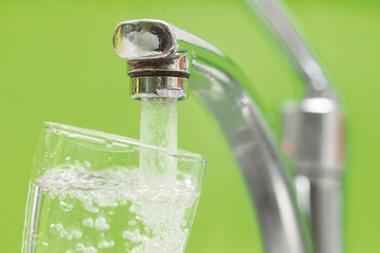Contamination of US water supply with MCHM and polyglycol ethers caused ill health when residents flushed toilets
After the massive chemical spill from a tank at a Freedom Industries’ storage site in West Virginia in January 2014, water company officials failed to consider the dangers of chemical vapour exposure and advised residents to flush contaminated water from their plumbing systems, a research team from Purdue University has concluded. As a result of following these directions, some residents have suffered from ill health.
Chemical storage tanks operated by Freedom Industries leaked more than 10,000 gallons of a mixture of (4-methylcyclohexyl)methanol (MCHM) and stripped polyglycol ethers into the Elk River, and more than 300,000 people near the state capital Charleston were directed not to use the liquorice-smelling tap water except for flushing toilets. As a result, contaminated drinking water was discharged into storm drains, septic tanks and sewer systems.
‘It was clear that volatile chemicals were present in the drinking water because it smelled like liquorice. That was a clear sign inhalation was a plausible chemical exposure route,’ stated Andrew Whelton, an assistant professor in Purdue’s environmental and ecological engineering division, who lead the research. ‘The public health consequences associated with flushing contaminated water in poorly ventilated rooms such as bathrooms were overlooked, and people became ill because of it,’ he said. Whelton’s team found that the most common adverse health effects included rashes and skin irritation, nausea, vomiting, diarrhoea, sore throat and respiratory symptoms.
The Perdue researchers also concluded that the US Centers for Disease Control and Prevention’s determination that the safe screening level for MCHM is 1 part per million was inadequate. ‘The illnesses occurred when people were exposed to levels below that amount,’ Whelton tells Chemistry World.












No comments yet